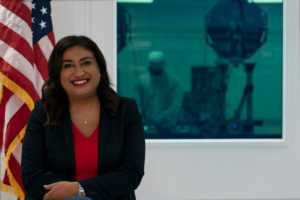While the number of satellites in orbit will grow significantly by 2031, low Earth orbit (LEO) operators and the companies that support them anticipate numerous near-term challenges, starting with the supply chain.
There is a lack of basic electrical components such as capacitors and inductors, not just “low-volume, esoteric parts that are needed just for satellites,” Glenn Katz, Telesat (NASDAQ: TSAT and TSX: TSAT) chief commercial officer, said Tuesday during the Connectivity Business Summit 2022 webinar, “What’s new in LEO and LEO proliferation.”
A guaranteed supply of necessary components requires multiple sources, Tina Ghataore, Mynaric (NASDAQ: MYNA and FRA: M0Y) chief commercial officer, said during the webinar. A clean supply chain is one without bad actors and raises no cybersecurity concerns, she said.
A need for new antennas and terminals
Meanwhile, Telesat has been working with manufacturers to seed the market with terminals that will work with its Lightspeed LEO constellation, Katz said. The company is still looking for smaller, fixed terminals for enterprises and mobility scenarios, he added.
“We need better, less costly, less power-hungry [electronically steered array]-type flat panels,” Katz said. “We haven’t announced it yet, but we have signed a contract with one of those types of companies to help invest in the [research and development] to get us to where we want to get to.”
Technology helps operators use existing infrastructure. For instance, the VITA 49 analog radio frequency (RF)-digital interface has been helpful to Kepler Communications in constructing its ground segment, Mina Mitry, Kepler chief executive, said during the webinar.
“We can be interoperable with existing satellites, and that’s particularly important for us for our teleport infrastructure, where some of our users get their data needs met,” Mitry said. “We’d like to see further innovation and investment into electrically steerable antenna[s] and other frequency bands that aren’t just the traditional FSS bands, and continued encouragement for the market to adopt interoperability standards.”

Mynaric is a proponent of optical standards, she added.
LEO risks as viewed from the insurance industry
The insurance industry has its own interests in LEO, and has both financial and policy concerns. When an insurance company reviews a LEO business, it considers everything, Chris Kunstadter, global head of space at insurer AXA XL, said during the webinar.
“First of all, will the business case sustain the operator?” he asked. “Secondly, will the performance requirements that the market imposes be satisfied by the technology deployed?
“Third is creditworthiness: we want to make sure that our client can pay the premium,” Kunstadter added. “Of course, if they don’t pay the premium, the insurance policy doesn’t attach.”
Space sustainability
Insurance companies are also interested in the space ecosystem as a whole, and have concerns about space sustainability, according to Kunstadter.
Space sustainability is “very much a legitimate serious concern within the industry,” moderator David Meltzer, secretary general of global satellite trade association GVF, pointed out.
“It’s a very important issue,” AXA XL’s Kunstadter agreed. “We engage with industry very closely and continuously with the operators, legislators, policymakers, space agencies, and pretty much everyone in the space industry. [We] really keep the discussion going on responsible and safe space activity, and we promote actions that enhance that safe and responsible activity.”
Specifically, AXA XL is working with industry partners to track smaller objects, he said, noting that every satellite and rocket body should have a tracking device on it since devices are now the size of a Post-It Note. All satellites above the International Space Station should have some form of propulsion, both for collision avoidance or post-mission disposal, Kunstadter added.
Telesat, at least, has sufficient fuel for the lifetime of the satellite, according to Katz. Because its Lightspeed satellites are located in orbits about twice as high as Starlink’s, Telesat’s constellation needs fewer satellites to cover the earth, but each must be larger. “They have an 11-year fuel life: 10 years of active life and a year for orbiting and also de-orbiting.”
The Connectivity Business Summit 2022 is a free webinar series addressing key issues in satellite technology and investment. View the agenda here. Register here to attend.








